Natchez Trace on:
[Wikipedia]
[Google]
[Amazon]

 The Natchez Trace, also known as the Old Natchez Trace, is a historic forest trail within the
The Natchez Trace, also known as the Old Natchez Trace, is a historic forest trail within the
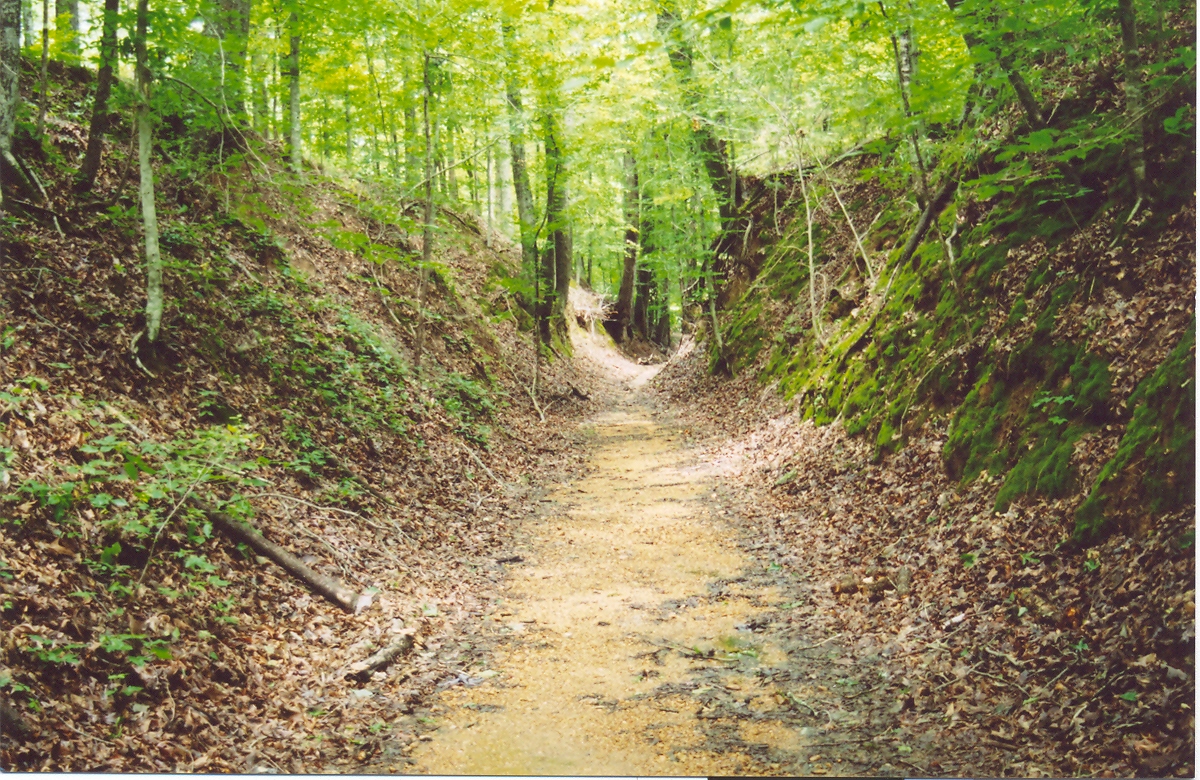 Largely following a geologic ridge line, prehistoric animals followed the dry ground of the Trace to distant grazing lands, the
Largely following a geologic ridge line, prehistoric animals followed the dry ground of the Trace to distant grazing lands, the
article; Morris, M. Scott; The Oxford Eagle online; Oxford, Mississippi; (September 11, 2017); retrieved March 2023 Another early common name was Trail to the Chickasaw Nation.

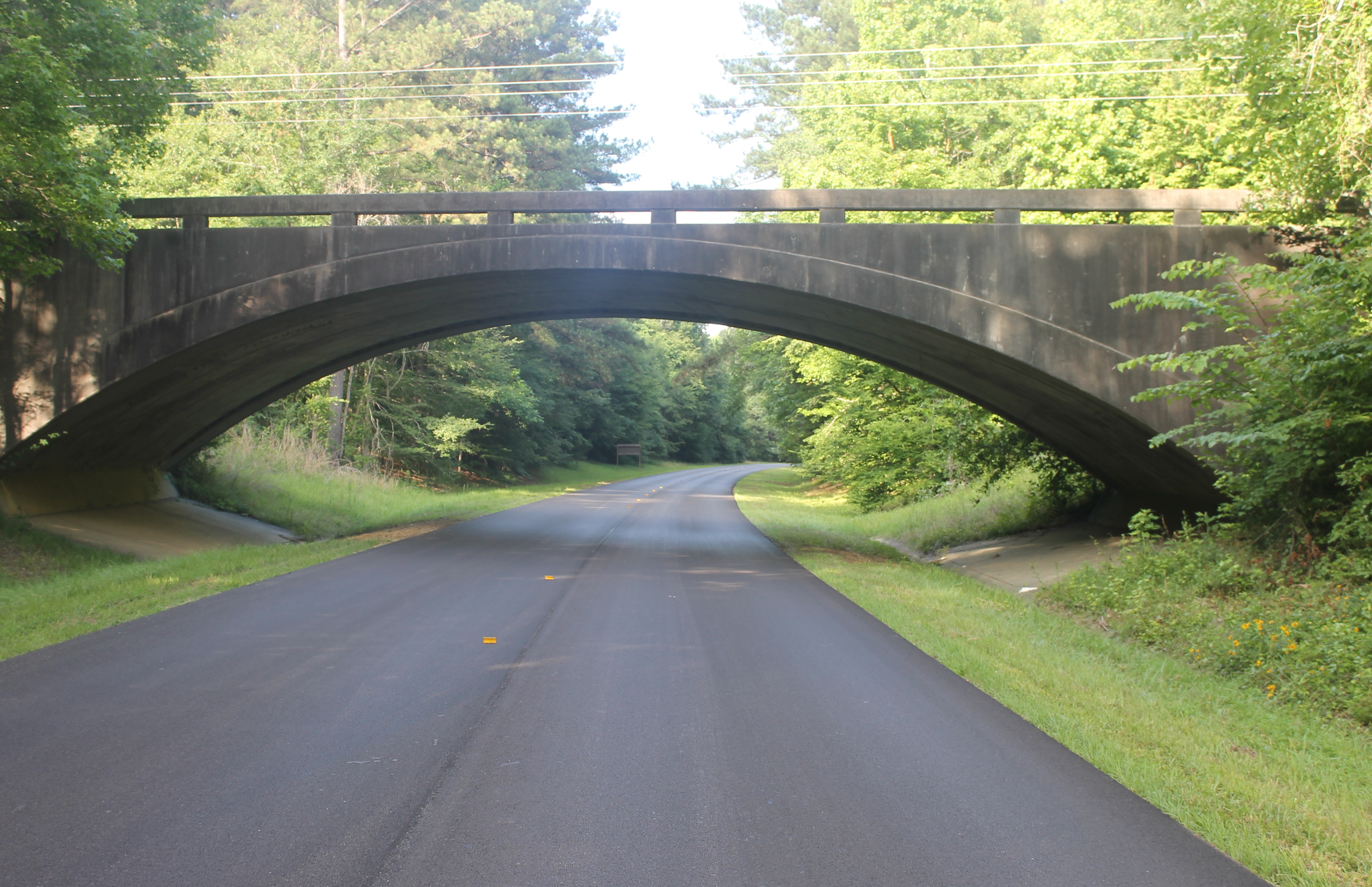
 Even before the 1803
Even before the 1803 
 The U.S. signed treaties with the
The U.S. signed treaties with the 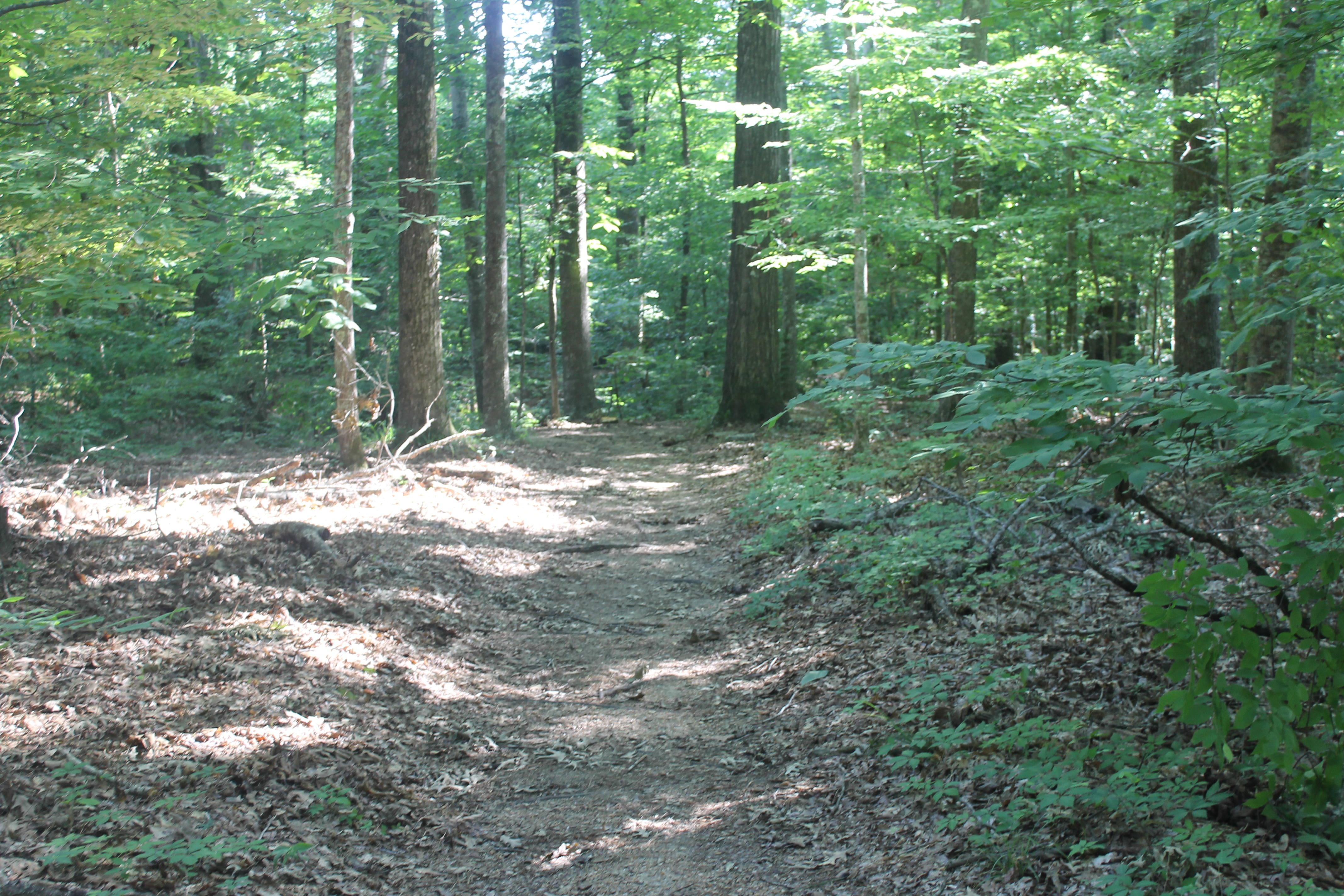 By 1817, the continued development of Memphis (with its access to the Mississippi River) and Jackson's Military Road (heading south from Nashville) formed more direct and faster routes to
By 1817, the continued development of Memphis (with its access to the Mississippi River) and Jackson's Military Road (heading south from Nashville) formed more direct and faster routes to
 As with the much-unsettled frontier, banditry regularly occurred along the Trace. Much of it centered around the river landing Natchez Under-The-Hill, as compared with the rest of the town atop the river bluff. Under-the-Hill, where barges and
As with the much-unsettled frontier, banditry regularly occurred along the Trace. Much of it centered around the river landing Natchez Under-The-Hill, as compared with the rest of the town atop the river bluff. Under-the-Hill, where barges and

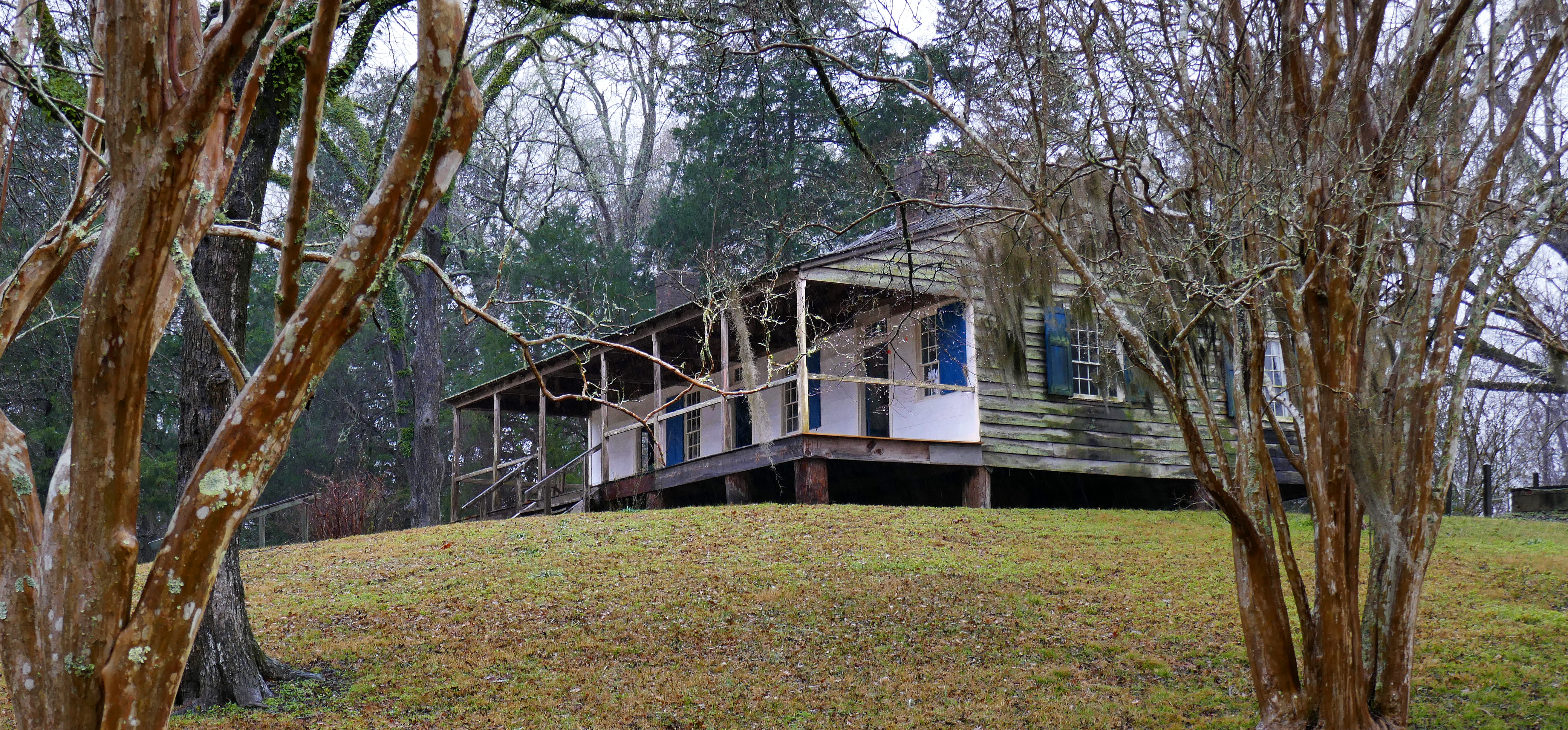
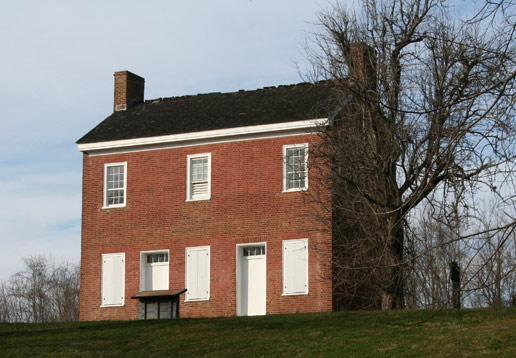
 The inns, or stands, as they were called along the Natchez Trace, provided lodging for travelers from the 1790s to the 1840s. These stands furnished food and accommodations and contributed to the spread of news, information, and new ideas. The food was basic: corn in the form of
The inns, or stands, as they were called along the Natchez Trace, provided lodging for travelers from the 1790s to the 1840s. These stands furnished food and accommodations and contributed to the spread of news, information, and new ideas. The food was basic: corn in the form of  * Buzzard Roost Stand, Ala. 1812 See:
* Buzzard Roost Stand, Ala. 1812 See:Webb, Stacy R. (2007). "Stand Owners & Traders Natchez Trace." ''MEHRA''.
Retrieved July 12, 2021.
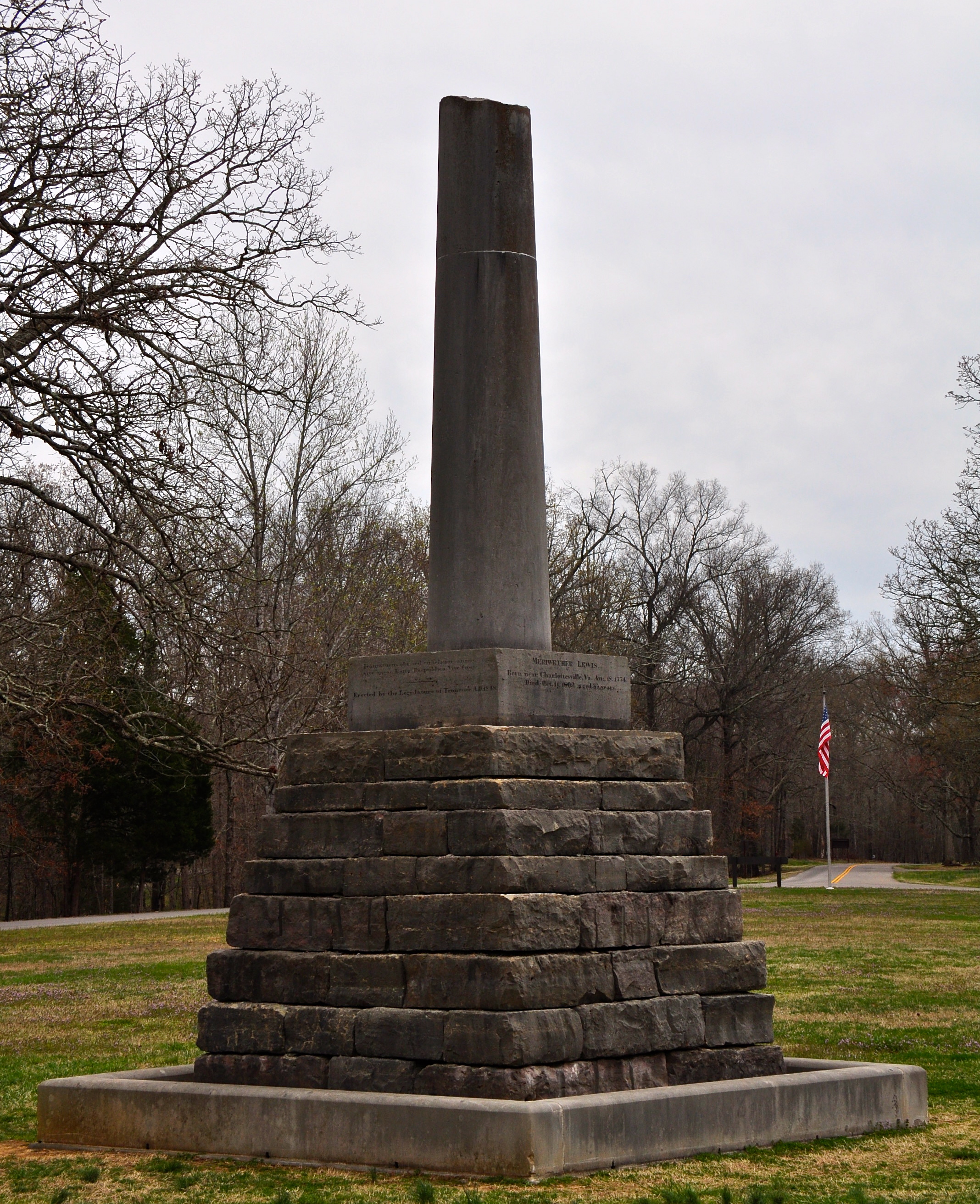
''Columbia Magazine'', Winter 1988, Vol. 1, No. 4, accessed Oct 17, 2010 In 1848, a Tennessee state commission erected a monument at the site. On the bicentennial of Lewis's death (2009), the first national public memorial service honoring his life was held; it was also the last event of the Lewis and Clark Expedition Bicentennial.
* *
*
* Hall, Robert Green (1914). ''The Natchez trace: a study in transportation and travel between the early west and southwest''; University of Wisconsin, pp. 12
-- Ebook (full view)
* Jamison, Lena Mitchell (1938). ''The Natchez trace''; University of Wisconsin—Madison, pp. 20
* Kroll, Harry Harrison (2005). ''Perilous Journey''; Kessinger Publishing, pp. 420,
National Park Service: Natchez Trace Parkway
Natchez Trace Profile and Videos
- Chickasaw.TV
Natchez Trace Parkway
at byways.org
Lesson Plan: "Footprints in the Dust: The Natchez Trace"
{{DEFAULTSORT:Natchez Trace Natchez Trace, Historic trails and roads in Alabama Historic trails and roads in Mississippi Historic trails and roads in Tennessee Muscle Shoals National Heritage Area Native American trails in the United States
United States
The United States of America (USA), also known as the United States (U.S.) or America, is a country primarily located in North America. It is a federal republic of 50 U.S. state, states and a federal capital district, Washington, D.C. The 48 ...
which extends roughly from Nashville, Tennessee
Nashville, often known as Music City, is the capital and List of municipalities in Tennessee, most populous city in the U.S. state of Tennessee. It is the county seat, seat of Davidson County, Tennessee, Davidson County in Middle Tennessee, locat ...
, to Natchez, Mississippi
Natchez ( ) is the only city in and the county seat of Adams County, Mississippi, United States. The population was 14,520 at the 2020 United States census, 2020 census. Located on the Mississippi River across from Vidalia, Louisiana, Natchez was ...
, linking the Cumberland
Cumberland ( ) is an area of North West England which was historically a county. The county was bordered by Northumberland to the north-east, County Durham to the east, Westmorland to the south-east, Lancashire to the south, and the Scottish ...
, Tennessee
Tennessee (, ), officially the State of Tennessee, is a landlocked U.S. state, state in the Southeastern United States, Southeastern region of the United States. It borders Kentucky to the north, Virginia to the northeast, North Carolina t ...
, and Mississippi
Mississippi ( ) is a U.S. state, state in the Southeastern United States, Southeastern and Deep South regions of the United States. It borders Tennessee to the north, Alabama to the east, the Gulf of Mexico to the south, Louisiana to the s ...
rivers.
Native Americans created and used the trail for centuries. Early European and American explorers, traders, and immigrants used it in the late 18th and early 19th centuries. European Americans founded inns, also known as "stands", along the Trace to serve food and lodging to travelers. Most of these stands closed as travel shifted to steamboats on the Mississippi and other rivers. The heyday of the Trace began in the 1770s and ended in the 1820s, by the 1830s the route was already in disrepair and its time as a major interregional commercial route had come to an end.
Today, the path is commemorated by the Natchez Trace Parkway, which follows the approximate path of the Trace, as well as the related Natchez Trace Trail. Parts of the original trail are still accessible, and some segments are listed on the National Register of Historic Places.
Origins
 Largely following a geologic ridge line, prehistoric animals followed the dry ground of the Trace to distant grazing lands, the
Largely following a geologic ridge line, prehistoric animals followed the dry ground of the Trace to distant grazing lands, the salt lick
A mineral lick (also known as a salt lick) is a place where animals can go to lick essential mineral nutrients from a deposit of salts and other minerals. Mineral licks can be naturally occurring or artificial (such as blocks of salt that far ...
s of today's Middle Tennessee
Middle Tennessee is one of the three Grand Divisions of Tennessee that composes roughly the central portion of the state. It is delineated according to state law as 41 of the state's 95 counties. Middle Tennessee contains the state's capital an ...
, and to the Mississippi River. Native Americans used many early footpaths created by the foraging of bison
A bison (: bison) is a large bovine in the genus ''Bison'' (from Greek, meaning 'wild ox') within the tribe Bovini. Two extant taxon, extant and numerous extinction, extinct species are recognised.
Of the two surviving species, the American ...
, deer
A deer (: deer) or true deer is a hoofed ruminant ungulate of the family Cervidae (informally the deer family). Cervidae is divided into subfamilies Cervinae (which includes, among others, muntjac, elk (wapiti), red deer, and fallow deer) ...
, and other large game
A game is a structured type of play usually undertaken for entertainment or fun, and sometimes used as an educational tool. Many games are also considered to be work (such as professional players of spectator sports or video games) or art ...
that could break paths through the dense undergrowth. In the case of the Trace, bison traveled north to find salt licks in the Nashville area.
After Native Americans began to settle the land, they blazed the trail and improved it further until it became a relatively well-established path. Numerous prehistoric
Prehistory, also called pre-literary history, is the period of human history between the first known use of stone tools by hominins million years ago and the beginning of recorded history with the invention of writing systems. The use o ...
indigenous settlements in Mississippi were established along the Natchez Trace. Among them were the 2,000-year-old Pharr Mounds of the Middle Woodland period
In the classification of :category:Archaeological cultures of North America, archaeological cultures of North America, the Woodland period of North American pre-Columbian cultures spanned a period from roughly 1000 BC to European contact i ...
, located near present-day Tupelo, Mississippi
Tupelo ( ) is a city in and the county seat of Lee County, Mississippi, United States. Founded in 1860, the population was 37,923 at the United States Census, 2020, 2020 census. It is the List of municipalities in Mississippi, 7th-most populous ...
.
The first recorded European explorer to travel the Trace in its entirety was an unnamed Frenchman in 1742, who wrote of the trail and its "miserable conditions". Early European explorers depended on the assistance of Native American guides to go through this territory — specifically, the Choctaw
The Choctaw ( ) people are one of the Indigenous peoples of the Southeastern Woodlands of the United States, originally based in what is now Louisiana, Mississippi and Alabama. The Choctaw language is a Western Muskogean language. Today, Choct ...
and Chickasaw
The Chickasaw ( ) are an Indigenous people of the Southeastern Woodlands, United States. Their traditional territory was in northern Mississippi, northwestern and northern Alabama, western Tennessee and southwestern Kentucky. Their language is ...
who occupied the region. These tribes and earlier prehistoric peoples, collectively known as the Mississippian culture
The Mississippian culture was a collection of Native American societies that flourished in what is now the Midwestern, Eastern, and Southeastern United States from approximately 800 to 1600 CE, varying regionally. It was known for building la ...
, had long used the Trace for trade. The Chickasaw leader, Chief Piomingo, made use of the trail so often that it became known as Piominko's Path during his lifetime.''Chickasaw Leader Piominko Impacted US, Mississippi History''article; Morris, M. Scott; The Oxford Eagle online; Oxford, Mississippi; (September 11, 2017); retrieved March 2023 Another early common name was Trail to the Chickasaw Nation.
Development
According to Methodist circuit preacher J. G. Jones, who traveled the lower Mississippi region for many years as part of his work, "Besides the water route, following the eastern tributaries of the Mississippi River to the Father of Waters and floating down to the point of debarkation, there were three land routesmere horse-pathsopened through the Indian country to Natchez and other settlements on the Lower Mississippi. These were maintained by the Government for mail routes, by treaty stipulations with the Indian tribes. The first began at Nashville, and crossed theTennessee River
The Tennessee River is a long river located in the Southern United States, southeastern United States in the Tennessee Valley. Flowing through the states of Tennessee, Alabama, Mississippi, and Kentucky, it begins at the confluence of Fren ...
at Colbert's ferry, below the Muscle Shoals
Muscle Shoals is the largest city in Colbert County, Alabama, United States. It is located on the left bank of the Tennessee River in the northern part of the state and, as of the 2010 census, its population was 13,146. The estimated popula ...
; thence through the Choctaw and Chickasaw Nation to the Grindstone Ford on Bayou Pierre, ending at Natchez and Fort Adams
Fort Adams is a former United States Army post in Newport, Rhode Island, Newport, Rhode Island, that was established on July 4, 1799, as a Seacoast defense in the United States#First System, First System Coastal defence and fortification, coas ...
. The second began at Knoxville
Knoxville is a city in Knox County, Tennessee, United States, and its county seat. It is located on the Tennessee River and had a population of 190,740 at the 2020 United States census. It is the largest city in the East Tennessee Grand Division ...
, and passed through the Cherokee Nation by way of the Tellico and Tombigbee rivers to Natchez. The third was from the Oconee settlements, in Georgia, through the Creek Nation across the Alabama River
The Alabama River, in the U.S. state of Alabama, is formed by the Tallapoosa River, Tallapoosa and Coosa River, Coosa rivers, which unite about north of Montgomery, Alabama, Montgomery, near the town of Wetumpka, Alabama, Wetumpka.
Over a co ...
in the direction of St. Steven's, on westwardly to Natchez. The traders of the Upper Mississippi River and its tributaries, who brought down their produce in flatboats, were accustomed to return on foot or horseback by the first routecalled the Nashville and Natchez traceand hence it became best known."
 Even before the 1803
Even before the 1803 Louisiana Purchase
The Louisiana Purchase () was the acquisition of the Louisiana (New France), territory of Louisiana by the United States from the French First Republic in 1803. This consisted of most of the land in the Mississippi River#Watershed, Mississipp ...
, President Thomas Jefferson
Thomas Jefferson (, 1743July 4, 1826) was an American Founding Fathers of the United States, Founding Father and the third president of the United States from 1801 to 1809. He was the primary author of the United States Declaration of Indepe ...
wanted to connect the distant Mississippi frontier to other settled areas of the United States. To foster communication with what was then called the Southwest, he directed the construction of a postal road between Daniel Boone
Daniel Boone (, 1734September 26, 1820) was an American pioneer and frontiersman whose exploits made him one of the first folk heroes of the United States. He became famous for his exploration and settlement of Kentucky, which was then beyo ...
's Wilderness Road
The Wilderness Road was one of two principal routes used by colonial and early national era settlers to reach Kentucky from the East. Although this road goes through the Cumberland Gap into southern Kentucky and northern Tennessee, the other ...
(the southern branch of the road ended at Nashville) and the Mississippi River.

 The U.S. signed treaties with the
The U.S. signed treaties with the Chickasaw
The Chickasaw ( ) are an Indigenous people of the Southeastern Woodlands, United States. Their traditional territory was in northern Mississippi, northwestern and northern Alabama, western Tennessee and southwestern Kentucky. Their language is ...
and Choctaw
The Choctaw ( ) people are one of the Indigenous peoples of the Southeastern Woodlands of the United States, originally based in what is now Louisiana, Mississippi and Alabama. The Choctaw language is a Western Muskogean language. Today, Choct ...
tribes to maintain peace as European Americans
European Americans are Americans of European ancestry. This term includes both people who descend from the first European settlers in the area of the present-day United States and people who descend from more recent European arrivals. Since th ...
entered the area in greater numbers. In 1801, the United States Army
The United States Army (USA) is the primary Land warfare, land service branch of the United States Department of Defense. It is designated as the Army of the United States in the United States Constitution.Article II, section 2, clause 1 of th ...
began trailblazing along the Trace, performing major work to prepare it as a thoroughfare. The work was done by soldiers reassigned from Tennessee and later by civilian contractors. Jefferson called it the "Columbian Highway" to emphasize American sovereignty in the area. The people who used it, however, dubbed the road "The Devil's Backbone" due to its remoteness, rough conditions, and the frequently encountered highwaymen
A highwayman was a robber who stole from travellers. This type of thief usually travelled and robbed by horse as compared to a footpad who travelled and robbed on foot; mounted highwaymen were widely considered to be socially superior to foo ...
found along the new road. Aaron Burr wrote to his daughter, that the "'road...you will see laid down...on the map...as having been cut by the order of the minister of war ..is imaginary; there is no such road.' The region between Washington, Mississippi, and the Choctaw domain was, Burr reported, 'a vile country, destitute of springs or of running water—think of drinking the nasty puddle water, covered with green scum, and full of animaculae—bah! … w glad I was to get nto the high country,all fine, transparent, lively streams, and itself he Tennesseea clear, beautiful, magnificent river.'"
By 1809, the trail was fully navigable by wagon, with the northward journey taking two to three weeks. Critical to the success of the Trace as a trade route was the development of inns and trading post
A trading post, trading station, or trading house, also known as a factory in European and colonial contexts, is an establishment or settlement where goods and services could be traded.
Typically a trading post allows people from one geogr ...
s, referred to at the time as "stands".
Many early migrants in Tennessee and Mississippi settled along the Natchez Trace. Some of the most prominent were Washington, Mississippi (the old capital of Mississippi); "Old" Greenville, Mississippi
Greenville is the List of municipalities in Mississippi, ninth-most populous city in the U.S. state of Mississippi, and the largest city by population in the Mississippi Delta region. It is the county seat of Washington County, Mississippi, Was ...
(where Andrew Jackson
Andrew Jackson (March 15, 1767 – June 8, 1845) was the seventh president of the United States from 1829 to 1837. Before Presidency of Andrew Jackson, his presidency, he rose to fame as a general in the U.S. Army and served in both houses ...
married Rachel Jackson in 1791); and Port Gibson, Mississippi
Port Gibson is a city and the county seat of Claiborne County, Mississippi, United States. The population was 1,567 at the 2010 United States Census, 2010 census. It is bordered on the west by the Mississippi River.
The first European settlers i ...
. The Natchez Trace was used during the War of 1812
The War of 1812 was fought by the United States and its allies against the United Kingdom of Great Britain and Ireland, United Kingdom and its allies in North America. It began when the United States United States declaration of war on the Uni ...
and the ensuing Creek War
The Creek War (also the Red Stick War or the Creek Civil War) was a regional conflict between opposing Native American factions, European powers, and the United States during the early 19th century. The Creek War began as a conflict within th ...
, as soldiers under Major General Andrew Jackson's command traveled southward to subdue the Red Sticks and to defend the country against invasion by the British
British may refer to:
Peoples, culture, and language
* British people, nationals or natives of the United Kingdom, British Overseas Territories and Crown Dependencies.
* British national identity, the characteristics of British people and culture ...
. Jackson most likely knew the road well from his career as an interstate slave trader operating between Natchez and Nashville beginning in 1789.
New Orleans
New Orleans (commonly known as NOLA or The Big Easy among other nicknames) is a Consolidated city-county, consolidated city-parish located along the Mississippi River in the U.S. state of Louisiana. With a population of 383,997 at the 2020 ...
. Trade shifted to either of these routes along the east or west of the area, away from the Trace. As author William C. Davis wrote in his book ''A Way Through the Wilderness'' (1995), the Trace was "a victim of its own success" by encouraging development in the frontier area.
With the rise of steamboat
A steamboat is a boat that is marine propulsion, propelled primarily by marine steam engine, steam power, typically driving propellers or Paddle steamer, paddlewheels. The term ''steamboat'' is used to refer to small steam-powered vessels worki ...
culture on the Mississippi River after the invention of the steam engine, the Trace lost its importance as a national road, as goods could be moved more quickly, cheaply, and in greater quantity on the river. Before the invention of steam power
A steam engine is a heat engine that performs mechanical work using steam as its working fluid. The steam engine uses the force produced by steam pressure to push a piston back and forth inside a cylinder. This pushing force can be transf ...
, the Mississippi River's south-flowing current was so strong that northbound return journeys generally had to be made over land.
Although many authors have written that the Trace disappeared back into the woods, much of it was used by people living nearby. Large sections of the Trace in Tennessee were converted to county roads for operation, and sections continue to be used today.
Early 19th century
Though the Natchez Trace was briefly used as a major United States route, it served an essential function for years. The Trace was the only reliable land link between the eastern states and the trading ports of Mississippi andLouisiana
Louisiana ( ; ; ) is a state in the Deep South and South Central regions of the United States. It borders Texas to the west, Arkansas to the north, and Mississippi to the east. Of the 50 U.S. states, it ranks 31st in area and 25 ...
. All sorts of people traveled down the Trace: itinerant preachers, highwaymen
A highwayman was a robber who stole from travellers. This type of thief usually travelled and robbed by horse as compared to a footpad who travelled and robbed on foot; mounted highwaymen were widely considered to be socially superior to foo ...
, traders, and peddler
A peddler (American English) or pedlar (British English) is a door-to-door and/or travelling vendor of good (economics), goods. In 19th-century United States the word "drummer" was often used to refer to a peddler or traveling salesman; as exem ...
s among them. The road was most heavily used for mail in the 1810s, until about 1825.
As part of the "Great Awakening
The Great Awakening was a series of religious revivals in American Christian history. Historians and theologians identify three, or sometimes four, waves of increased religious enthusiasm between the early 18th century and the late 20th cent ...
" movement that swept the country in the late 18th and early 19th centuries, the "spiritual development" along the Trace started from the Natchez end and moved northward. Several Methodist
Methodism, also called the Methodist movement, is a Protestant Christianity, Christian Christian tradition, tradition whose origins, doctrine and practice derive from the life and teachings of John Wesley. George Whitefield and John's brother ...
preachers began working a circuit along the Trace as early as 1800. By 1812 they claimed a membership of 1,067 white Americans
White Americans (sometimes also called Caucasian Americans) are Americans who identify as white people. In a more official sense, the United States Census Bureau, which collects demographic data on Americans, defines "white" as " person hav ...
and 267 African Americans
African Americans, also known as Black Americans and formerly also called Afro-Americans, are an American racial and ethnic group that consists of Americans who have total or partial ancestry from any of the Black racial groups of Africa ...
. The Methodists were soon joined in Natchez by other Protestant
Protestantism is a branch of Christianity that emphasizes Justification (theology), justification of sinners Sola fide, through faith alone, the teaching that Salvation in Christianity, salvation comes by unmerited Grace in Christianity, divin ...
denominations, including Baptist
Baptists are a Christian denomination, denomination within Protestant Christianity distinguished by baptizing only professing Christian believers (believer's baptism) and doing so by complete Immersion baptism, immersion. Baptist churches ge ...
missionaries
A missionary is a member of a religious group who is sent into an area in order to promote its faith or provide services to people, such as education, literacy, social justice, health care, and economic development.Thomas Hale 'On Being a Miss ...
and Presbyterian
Presbyterianism is a historically Reformed Protestant tradition named for its form of church government by representative assemblies of elders, known as "presbyters". Though other Reformed churches are structurally similar, the word ''Pr ...
s.
The latter accompanied the migration of Scots-Irish and Scots into the frontier areas. Presbyterians and their frontier offshoot, the Cumberland Presbyterians, were the most active of the three denominations in this country. They claimed converts among Native Americans. The Presbyterians started working from the south; the Cumberland Presbyterians worked from the north, as they had migrated to Tennessee from Kentucky.
keelboat
A keelboat is a riverine cargo-capable working boat, or a small- to mid-sized recreational sailing yacht. The boats in the first category have shallow structural keels, and are nearly flat-bottomed and often used leeboards if forced in open w ...
s put in with goods from northern ports, was a hotbed of gamblers, prostitutes, and drunken crew from the boats. Many of the rowdies, referred to as "Kaintucks", were rough Kentucky frontiersmen who operated flatboats down the river. They delivered goods to Natchez in exchange for cash and sought gambling contests in Natchez Under-the-Hill. They walked or rode horseback the 450 miles back up the Trace to Nashville. In 1810, an estimated 10,000 "Kaintucks" used the Trace annually to return to the north to start another river journey.
Other dangers lurked on the Trace in the areas outside city boundaries. Highwaymen (such as John Murrell and Samuel Mason) terrorized travelers along the road. They operated large gangs of organized brigands
Brigandage is the life and practice of highway robbery and plunder. It is practiced by a brigand, a person who is typically part of a gang and lives by pillage and robbery.Oxford English Dictionary second edition, 1989. "Brigand.2" first record ...
in one of the first examples of land-based organized crime
Organized crime is a category of transnational organized crime, transnational, national, or local group of centralized enterprises run to engage in illegal activity, most commonly for profit. While organized crime is generally thought of as a f ...
in the United States.
Stands along the trace



 The inns, or stands, as they were called along the Natchez Trace, provided lodging for travelers from the 1790s to the 1840s. These stands furnished food and accommodations and contributed to the spread of news, information, and new ideas. The food was basic: corn in the form of
The inns, or stands, as they were called along the Natchez Trace, provided lodging for travelers from the 1790s to the 1840s. These stands furnished food and accommodations and contributed to the spread of news, information, and new ideas. The food was basic: corn in the form of hominy
Hominy is a food item produced from dried maize (corn) kernels that have been treated with an alkali, in a process called nixtamalization ( is the Nahuatl word for "hominy"). "Lye hominy" is a type of hominy made with lye.
History
The process ...
was a staple, and bacon, biscuits, coffee with sugar, and whiskey were served. Lodging was normally on the floor; beds were available only to a few due to many travelers and cramped conditions. Some travelers chose to sleep outdoors or on the porches.
;Stands on the old Natchez Trace, from Nashville south to Natchez
;''Nashville
Nashville, often known as Music City, is the capital and List of municipalities in Tennessee, most populous city in the U.S. state of Tennessee. It is the county seat, seat of Davidson County, Tennessee, Davidson County in Middle Tennessee, locat ...
''
* Joslin's Stand, Tenn. 1797
* Gordon's Stand, with Gordon's Ferry across the Duck River, Tenn. 1802.
* Keg Springs Stand, Tenn. 1812
* Sheboss Place, Tenn.
* Dobbin's Stand, Tenn. 1808
* Grinder's Stand, Tenn. 1808
*McLish's Stand, Tenn. 1806
*Young Factor's Stand, Tenn. 1805
*McGlamery's Stand, Tenn.
*Toscomby's Stand, Tenn.1810
* George Colbert
George Colbert (November 7, 1839) was an early 19th century, 19th-century Chickasaw leader who commanded 350 Chickasaw auxiliary troops who fought under Major General Andrew Jackson during the Creek War. He also served as an Officer (armed forc ...
's Stand and Colbert's Ferry across the Tennessee River, Ala. 1806; present-day Florence
 * Buzzard Roost Stand, Ala. 1812 See:
* Buzzard Roost Stand, Ala. 1812 See:Levi Colbert
Levi Colbert (June 2, 1834) was an early 19th-century Chickasaw leader and the namesake of Itawamba County, Mississippi.
Early life and education
Levi Colbert was born around 1759 in the Chickasaw Nation (present-day Alabama). He was the ...
*Levi Colbert's Stand, Ala.
*Brown's Stand, Miss. 1815
*Old Factor's Stand, Miss. 1812
*Levi Kemp's Stand, Miss. 1825
*James Colbert's Stand, Miss. 1812
*Tockshish's Stand (McIntosh's Stand), or McIntoshville, Chickasaw Old Town, Miss. 1797
*Wall's Stand, Miss. 1811
* Pigeon Roost Stand, Miss. 1800
*Mitchell's Stand, Miss. 1806
* French Camp, LeFleur's Stand, Miss. 1810
*Hawkins's Stand, Harkin's Stand, Miss. 1811
*Shoat's Stand (Choteau's Stand), Miss. 1811
*Anderson's Stand, Miss.1811
*Crowders Stand, Miss. 1813
*Doak's Stand, Miss. 1810. See: Treaty of Doak's Stand
The Treaty of Doak's Stand (7 Stat. 210, also known as Treaty with the Choctaw) was signed on October 18, 1820 (proclaimed and legally binding on January 8, 1821) between the United States and the Choctaw Indian tribe. The Treaty of Doak's Stan ...
.
*Ward's Stand, Miss. 1811
*Brashear's Stand, Miss. 1806. See: Ridgeland, Mississippi
Ridgeland is a city in Madison County, Mississippi, United States. The population was 24,340 at the 2020 census. It is part of the Jackson metropolitan area.
History
In 1805, the Choctaw Indian Agency, headed by Silas Dinsmoor, was located ...
.
;'' Jackson''
*Ogburn's Stand, Miss. 1810
*Hayes's Stand, Miss. 1815
*Dean's Stand, Miss. 1821
*Red Bluff Stand, McRover's Stand, Smith's Stand, Miss.1806
*Wooldridge's Stand, Miss.1806
*Dillon's Stand, aft. 1830
* Grindstone Ford, Miss. 1797
;'' Port Gibson''
* Coon Box Stand, Miss.
* Greenville, Miss.
* Uniontown, Miss.
* Selserville, Miss.
* Washington, Miss.
;'' Natchez''
Source:Retrieved July 12, 2021.
Death of Meriwether Lewis

Meriwether Lewis
Meriwether Lewis (August 18, 1774 – October 11, 1809) was an American explorer, soldier, politician, and public administrator, best known for his role as the leader of the Lewis and Clark Expedition, also known as the Corps of Discovery, with ...
, of the Lewis and Clark Expedition
The Lewis and Clark Expedition, also known as the Corps of Discovery Expedition, was the United States expedition to cross the newly acquired western portion of the country after the Louisiana Purchase. The Corps of Discovery was a select gro ...
fame, died while traveling on the Trace. Then serving as appointed governor of the Louisiana Territory
The Territory of Louisiana or Louisiana Territory was an organized incorporated territory of the United States that existed from July 4, 1805, until June 4, 1812, when it was renamed the Missouri Territory. The territory was formed out of t ...
, he was on his way to Washington, D.C., from his base in St. Louis, Missouri. Lewis stopped at Grinder's Stand (near current-day Hohenwald, Tennessee) for overnight shelter in October 1809. He was distraught over many issues, possibly affected by his use of opium
Opium (also known as poppy tears, or Lachryma papaveris) is the dried latex obtained from the seed Capsule (fruit), capsules of the opium poppy ''Papaver somniferum''. Approximately 12 percent of opium is made up of the analgesic alkaloid mor ...
. He was believed by many to have committed suicide
Suicide is the act of intentionally causing one's own death.
Risk factors for suicide include mental disorders, physical disorders, and substance abuse. Some suicides are impulsive acts driven by stress (such as from financial or ac ...
there with a gun.
Some uncertainty persists as to whether it was suicide. His mother believed he had been murdered, and rumors circulated about possible killers. Thomas Jefferson
Thomas Jefferson (, 1743July 4, 1826) was an American Founding Fathers of the United States, Founding Father and the third president of the United States from 1801 to 1809. He was the primary author of the United States Declaration of Indepe ...
and Lewis's former partner, William Clark
William Clark (August 1, 1770 – September 1, 1838) was an American explorer, soldier, Indian agent, and territorial governor. A native of Virginia, he grew up in pre-statehood Kentucky before later settling in what became the state of Misso ...
, accepted the report of suicide. Lewis was buried near the inn along the Trace.Dee Brown, "What Really Happened to Meriwether Lewis?"''Columbia Magazine'', Winter 1988, Vol. 1, No. 4, accessed Oct 17, 2010 In 1848, a Tennessee state commission erected a monument at the site. On the bicentennial of Lewis's death (2009), the first national public memorial service honoring his life was held; it was also the last event of the Lewis and Clark Expedition Bicentennial.
See also
* Natchez Trace State Park, Tennessee * Trace State Park, MississippiNotes
References
** *
*
Further reading
* George, Linda, George, Charles (2001). ''The Natchez Trace'', pp. 3* Hall, Robert Green (1914). ''The Natchez trace: a study in transportation and travel between the early west and southwest''; University of Wisconsin, pp. 12
-- Ebook (full view)
* Jamison, Lena Mitchell (1938). ''The Natchez trace''; University of Wisconsin—Madison, pp. 20
* Kroll, Harry Harrison (2005). ''Perilous Journey''; Kessinger Publishing, pp. 420,
External links
National Park Service: Natchez Trace Parkway
Natchez Trace Profile and Videos
- Chickasaw.TV
Natchez Trace Parkway
at byways.org
Lesson Plan: "Footprints in the Dust: The Natchez Trace"
{{DEFAULTSORT:Natchez Trace Natchez Trace, Historic trails and roads in Alabama Historic trails and roads in Mississippi Historic trails and roads in Tennessee Muscle Shoals National Heritage Area Native American trails in the United States